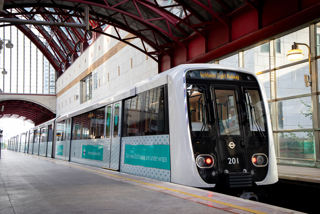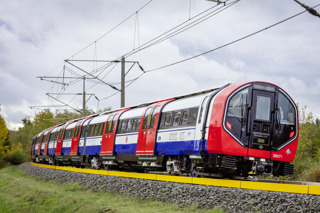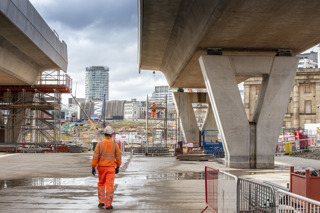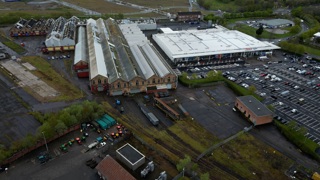Worn bogie centre pivot liners and a severe track twist were the primary causes of a freight train derailment at Washwood Heath in Birmingham on March 23 2015, according to the Rail Accident Investigation Branch (RAIB).
The rear portion of Megafret wagon 37 80 4909 147-3, built in 1999, derailed on the 0558 Crewe Basford Hall-Washwood Heath, while travelling from the Up Derby Slow to the Down Derby Goods line at Washwood Heath West Junction at the linespeed of 15mph.
The leading left-side wheels of the bogie climbed onto the closure rail of points 802B, and then all four wheels dropped to the left. The bogie ran derailed through the switches of these points, plain line between them and through points 805A, being guided back onto the track by the converging rails of the latter points. The derailed bogie damaged track and signalling equipment before signallers stopped the train, and the driver’s inspection revealed bogie damage consistent with a derailment.
The wagon was hired by Freightliner from Swiss-based Ahaus Alstätter Eisenbahn (AAE) and maintained by David Wagon Services (DWS). AAE had been acquired by German company VTG on January 6 2015.
According to the RAIB report, AAE’s maintenance instructions in its Technical Specification for Overhaul (TSO) mandated a bogie lift only every six years with no intermediate inspection, despite evidence from the UK and Europe that the bogie centre pivot liners would only last for 250,000 miles in service - a distance covered by AAE’s Megafret wagons in an average of 3.1 years.
The centre bogie pivot was found to be making contact with the steel casting on the bogie in which the pivot liner normally rests. This increased frictional resistance, prevented the bogies from rotating normally in the curves, and contributed to the derailment.
“AAE’s processes for management of maintenance were not robust and allowed the centre pivot liners of its Megafret wagons in the UK to deteriorate to an unsafe state,” the RAIB concludes.
Furthermore, the RAIB adds: “AAE could provide the RAIB with no evidence that it had assessed the service life of the liners in terms of distance run, and neither AAE nor DWS were monitoring the distance that the wagons actually ran.” (A further derailment of an AAE Megafret wagon took place at Doncaster on April 11 2015, with a similar cause.)
A contributing fault was a twist fault of such severity that once detected, Network Rail’s own standards say it should be repaired within 36 hours. A deliberate twist was required to join the non-canted slow line to the fast line, which had a 50mm cant. Although the track was inspected at the required intervals, the RAIB’s investigation suggested a static twist of 1-in-121 over three metres. NR’s standards say that a twist between 1-in-91 and 1-in-125 requires remedial action within 36 hours.
The RAIB also found weaknesses among NR maintenance staff’s knowledge of such two-level crossovers. Five timber bearers on the crossovers were replaced on March 7/8 2015, and maintenance staff concluded that their replacement would not have affected the cant. However, the RAIB found that the two-level baseplates beneath the rails of the crossover had not been installed in accordance with the design drawing. The next inspection of the twist was due to have been a six-monthly check using an Amber trolley in April 2015.
The RAIB recommends that VTG should clarify maintenance instructions for Megafret wagons and specify the intervals for checks of the bogie centre pivot liner. It also says VTG should review (and update as necessary) processes that will apply if a systemic defect is identified with a former AAE wagon.
For Network Rail, the RAIB says: “Network Rail should review, and update as necessary, its switches and crossing (S&C) training course(s) to confirm that there is adequate coverage of two-levelling of S&C. It should ensure that S&C maintenance staff who undertake maintenance of two-levelled S&C are competent to identify and maintain two-levelled S&C. In addition, Network Rail should introduce a system to make the necessary information available to enable correct maintenance of two-levelled S&C.
- For more on this story, read RAIL 792, published on January 20.

















Login to comment
Comments
No comments have been made yet.